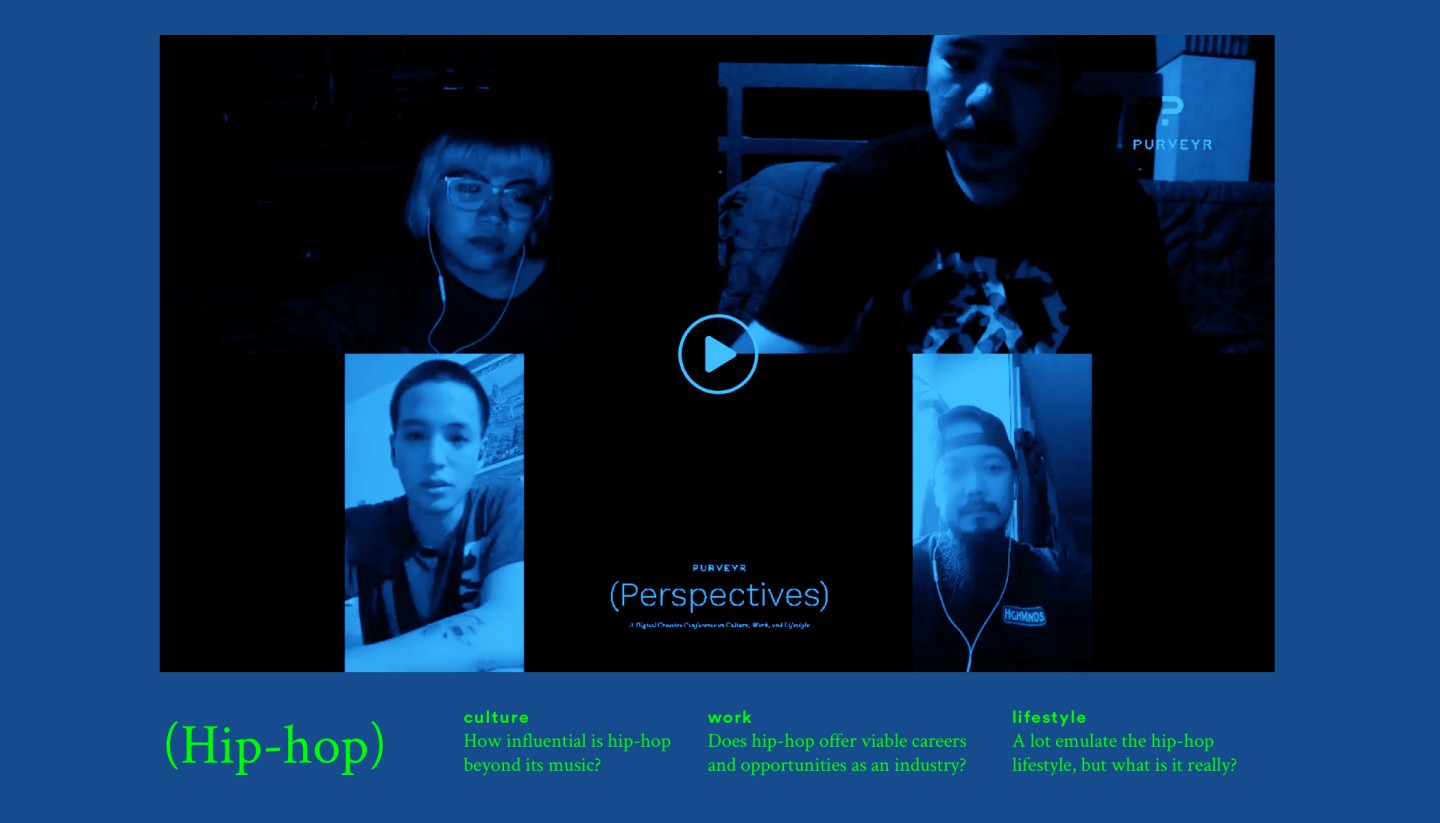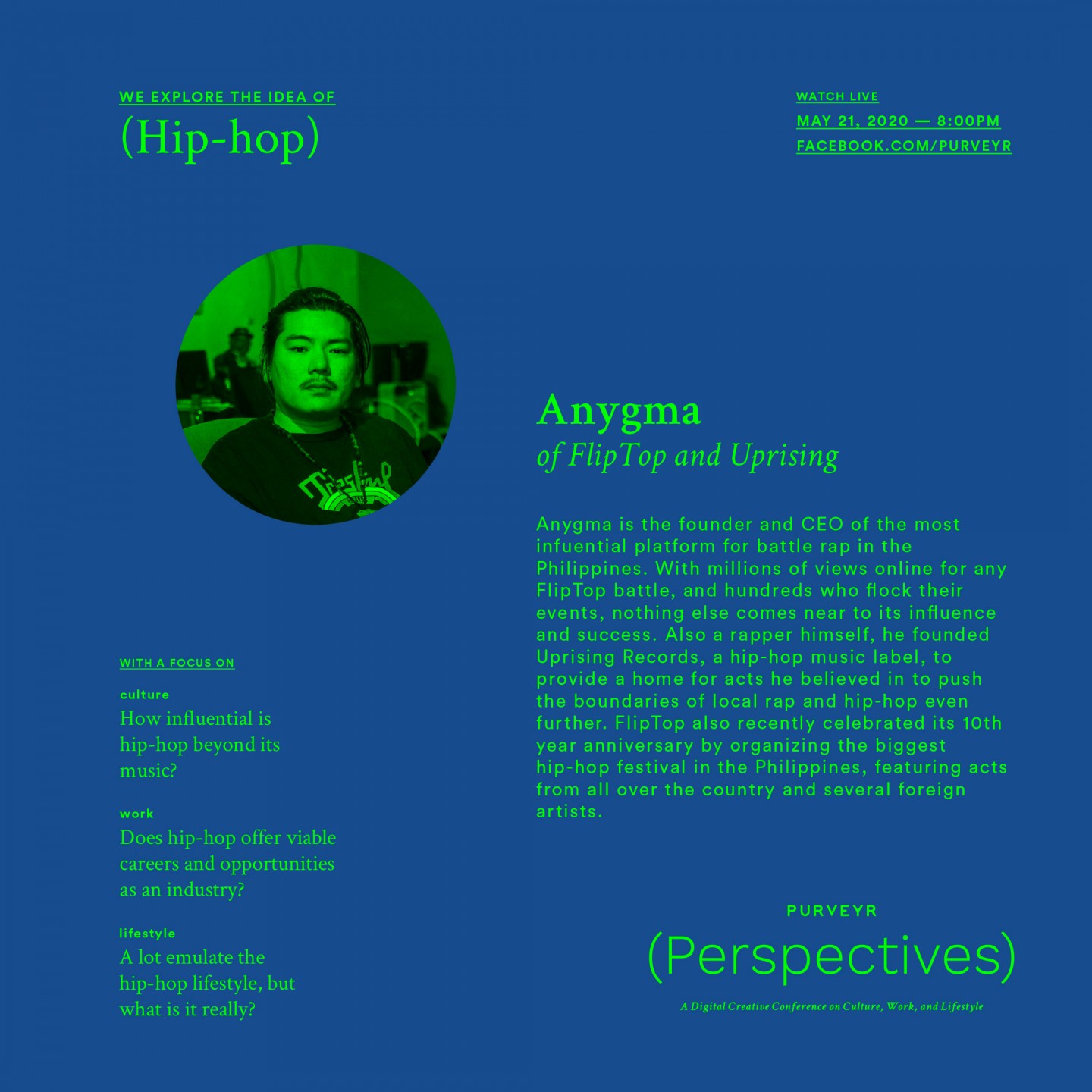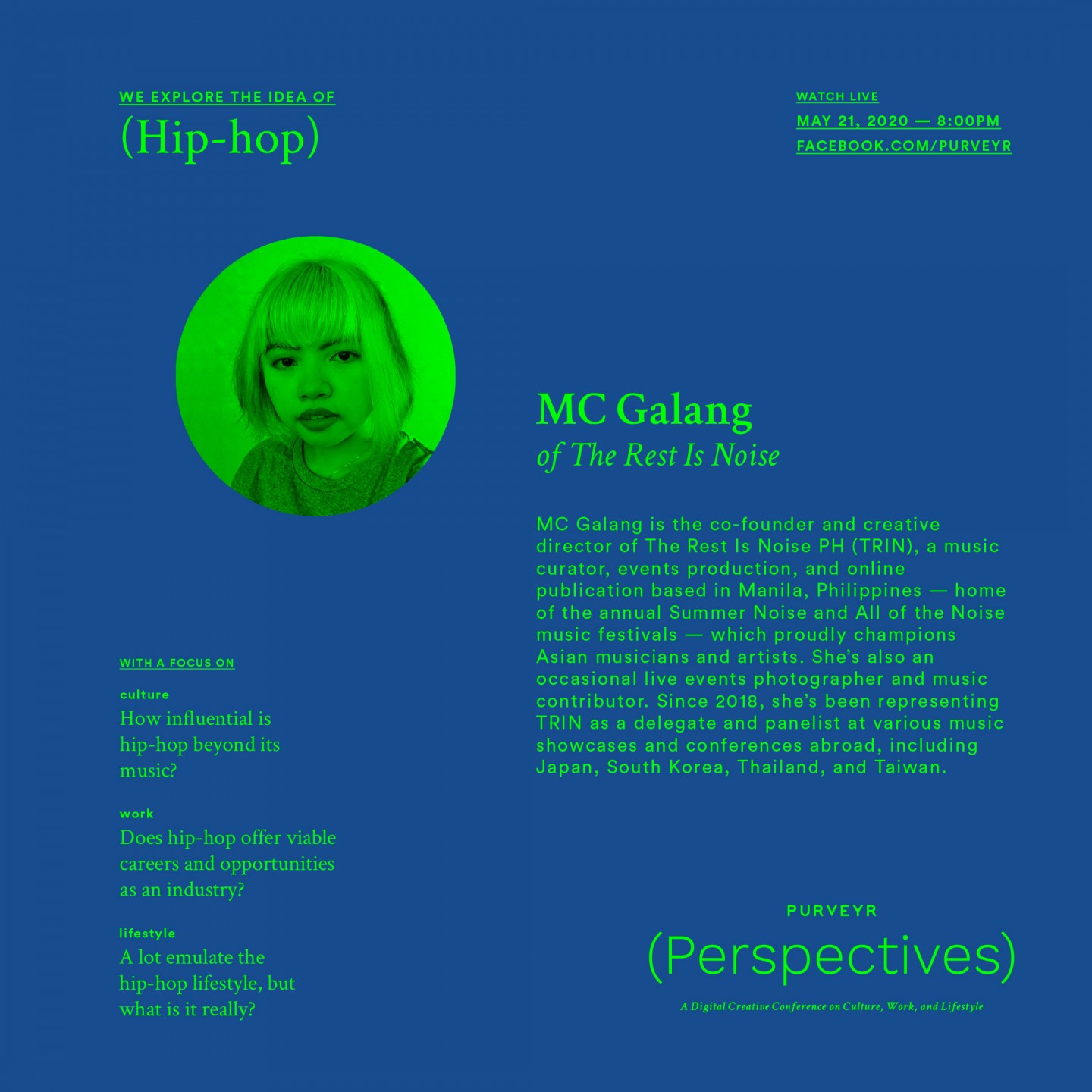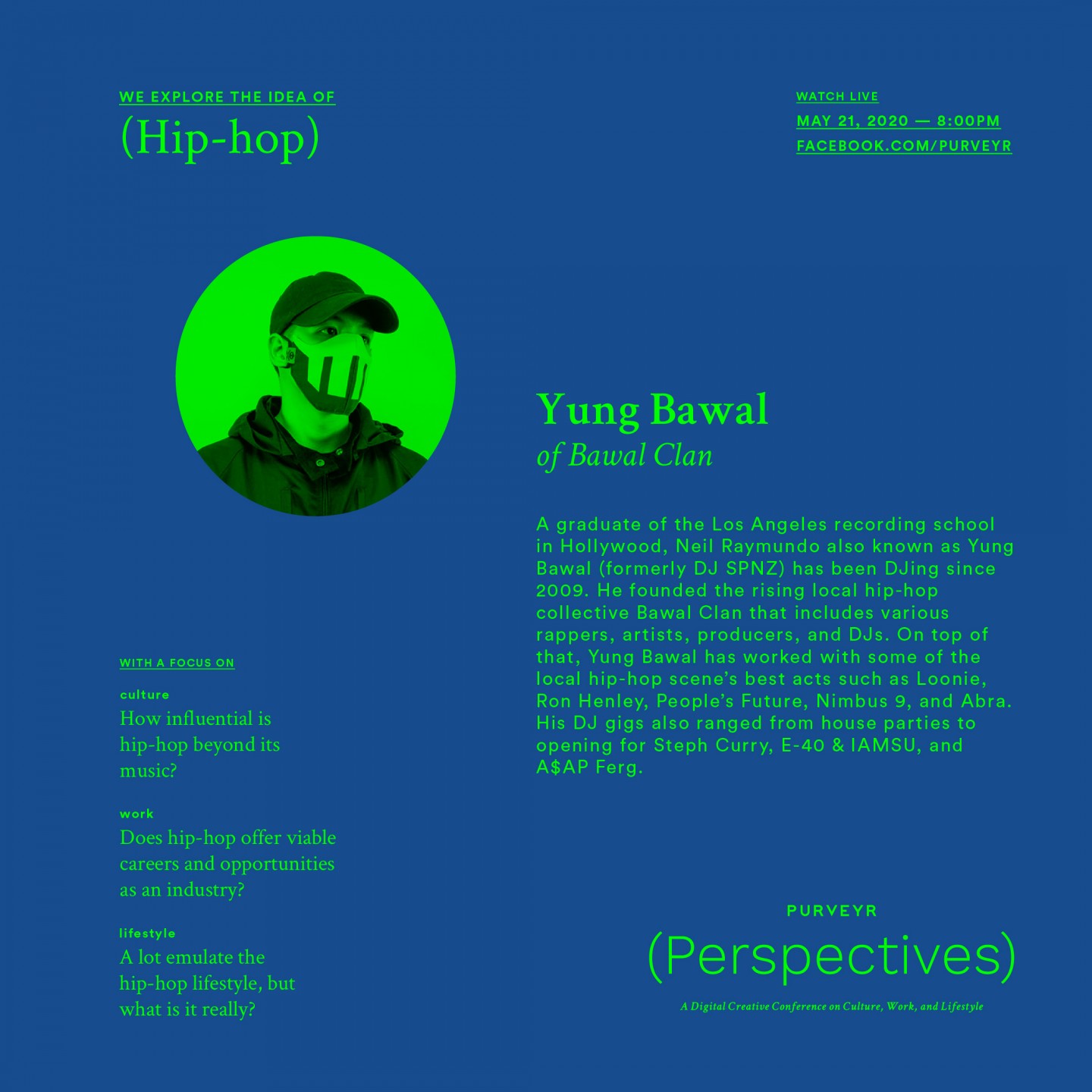Back in the 70s when some people couldn’t get into disco, they had to recreate their own. Turntables became the main music instruments, MCs got on the mic and there was breakdancing to keep the party going, and graffiti became a form of expression in the streets. All of these originated in New York, and now they are all part of the culture that we call hip-hop.
But what is hip-hop like in the local scene? We had a chance to sit down with people from the industry — Anygma of FlipTop & Uprising, MC Galang of The Rest Is Noise, Yung Bawal of Bawal Clan, and Batas of Illustrado, Teknika Brutal, and Supremo, to talk about the local hip-hop culture and beyond.
Meron akong ano, meron akong kwento (I have something, I have a story)
You can’t say “Pinoy hip-hop” without mentioning Francis Magalona, whose career in the 90s pretty much put Pinoy hip-hop in the mainstream media with his debut album entitled “Yo!” (1990). It was the first full-length rap album which featured the iconic track “Mga Kababayan.” Along with Francis M. was Andrew Espiritu, more commonly known as Andrew E, who became widely popular with his first hit single “Humanap Ka Ng Panget” and eventually founded Dongalo Wreckords, an independent rap label. “Outside of Francis M and Andrew E, sa street level, Dongalo was very influential. It was the great empire of rap music. Salbakuta, B.B. Clan.. There was also a lot of gangsta rap like Death Threat (a group which Gloc-9 was part of), Ghetto Doggs. They have a distinct sound, iba yung flow nila and bounce sa music nila”, Anygma shared.
All of those artists were doing rap, but the word “hip-hop” was still not clearly defined by many. Batas recalls, “hindi ko alam yung hiphop nung time na yun, alam ko rap sila (Francis M and Andrew E). Pero nung dumating na yung era ng Mastaplann, Legit Misfitz.. Dun na ako na-hook sa culture. Ito pala yung hip-hop.” Mastaplann entered the scene in 1992, a group who rapped in English, and whose sound was more influenced by the West Coast. Yung Bawal said, “I’ve always been a fan of old school sound growing up so I always compared them to old school hip-hop from the States. They had like an international sound.”
With all of these artists that emerged in the 90s, it was considered as the golden era of Pinoy hip-hop. Fast forward to 2010, FlipTop was born, the largest professional rap battle in the country, it gave aspiring artists a stage to show off their skills in freestyle rap. “FlipTop really touched on the entire culture of hip-hop, or at least, introduce the culture of hip-hop to those who may not be really exposed to it,” MC Galang stated. FlipTop can be described as raw and unapologetic, just like how hip-hop is.
The rap battle gave a link to the hip-hop community all over the Philippines. The shows were not limited to Manila audience, but they also had events in the provinces like Cavite, Pampanga, Olongapo, Cebu Davao, and Cagayan De Oro. Batas also mentioned that lyricism leveled up because of FlipTop, everyone must know how to write, “kahit yung mga hindi buma-battle alam nilang kailangan maging solid lyrics niya. Naging patalasan siya.”
And now with the rise of independent hip-hop artists, also comes the emergence of collectives. An example of this is Bawal Clan — a collective of producers, DJs, and recording artists. For Yung Bawal, being in a collective is a strength. “It helps everyone within the group because you’re able to bounce off ideas from each other. Everyone in Bawal Clan don’t just make music, but also make graphics and videos. It allows us to move on our own and be creative with our content.” For Batas who started out as solo independent artist, he also feels that being in a collective helps you be more diverse since you are being exposed to different styles.

The hurdles in Pinoy hip-hop
It’s a known fact that a large population of our country grew up listening to more rock and pop than hip-hop. Despite a genre being around for quite some time, it still struggles to make it more commercially successful. Batas relates this to the factor that as Filipinos, we are very conservative in nature. To which MC Galang also agreed, “it’s not the same as other types of music cause I feel like it’s more abrasive compared to pop na chill and laidback. With hip-hop, there’s still a notion na puro mura, magulo. If hip-hop will be commercialized, it wouldn’t sound the same as we know it, as we love it. Because there will be a lot of factors that will come in, creative-wise.”
As much as artists would like to have creative freedom, they also want to get more support from the people. While they seem to have a strong following online, hip-hop in the country looks like it’s still on the fringes. Batas pointed out, “I think kaya siya nagiging niche is because mahina pa rin ang buying power ng karamihan. We have a strong following online, pero when we do shows, hindi ganun kadami kasi wala pang buying power.” Batas compares this to when you go to gigs of bands that are guitar-heavy, it’s almost usually jam-packed.
Batas also mentioned how documentation is very important in the hip-hop culture. “Kulang yung media natin that talks about Pinoy hip-hop. Kasi siguro mas rock oriented ang mga tao, mas yun ang pinupuntahan. Although ang daming hip-hop sa atin, pero pag dating sa media mas madami talagang binibigyan pansin ang mga banda.”
MC Galang noticed that when they were starting The Rest Is Noise, there were very few hip-hop gigs, and it’s usually just produced by the artists themselves. “It’s very important for us event organization to include hip-hop artists in our roster, to be part of our events,” she said. By being more inclusive, the hope prevails that this will also be a way to spread awareness and immerse the outsiders in the hip-hop culture.
Hip-hop beyond the music
Much has been said about rap, but some people still use rap and hip-hop interchangeably. To put it simply, there’s a famous quote from American rapper and producer KRS-One, “Rap is something you do, hip-hop is something you live.”
When you ask people to define hip-hop, some would say it’s rebellious. This is clearly evident in the way songs are written, which mostly talks about topics that are socially relevant. An example would be Gloc 9’s “Upuan” which was released in 2009 and received numerous awards when it was released in the mainstream media, and at the same time scorned by some politicians. But for Batas, being a rebel means also being insatiably curious, and not just following the trend; it’s being aware and going against the status quo. Anygma also added, “more than the awareness is the discussion, the synthesis of ideas. It’s an avenue to express your sentiments, your ideas towards social issues, and the discussion na mage-generate ng ganung kanta.”
When asked about what makes hip-hop a lifestyle, Yung Bawal opened his statement with this:
“It goes back to the whole vibe of what hip-hop is. You don’t need to be an artist to have that vibe within you. It’s the way you present yourself.” Oversized shirts, low waist pants, big chains, snapbacks — those are a few of the bold statements in the 90s, which contributed to the hip-hop fashion. This style was not limited to just among rappers, but also in some celebrities in the Hollywood. Subconsciously, when you idolize someone, you want to dress up like them, copy their hairstyle, and carry their swag. “The icons in hip-hop become influential. So kind of like, we want to dress up like the person we listen to. We see it in the whole entertainment industry, even in the movies,” Yung Bawal stated.
Apart from their distinct fashion choices and being labeled as rebels, Anygma pointed out that the values of hip-hop are rooted in community and organization. While in the country, it started off as purely an entertainment value, in the States it was really all about the culture and the storytelling first. “It’s important for people to know that hip-hop is not just a genre, we should not limit it to that. But it’s also a culture, not just African-Americans, but in many parts of the world. And it’s also a movement in terms of how we express ourselves,” MC Galang quoted.
What’s next for local hip-hop?
Hip-hop artists in particular earn through gigs, merch, and streams. We live in a time where exposure is now greater than album sales. “Medyo lost art na yung concept of physical albums, maliban sa mga collectors talaga. So sa lakas ng exposure ngayon, nagkakaron na ng sales through gigs instead, or other stuff like endorsements and brand partnerships,” Anygma said. Thanks to technology, it’s now easier to discover artists and share music to other people.
But as we navigate through the world of “new normal” there’s no denying that the creative industry is one of the sectors largely affected by the pandemic. Now that events and gigs are cancelled, musicians and roadies may have lost a source of income. But this doesn’t mean they’ll stop creating music, or showing up for shows, even online for now. In fact, Bawal Clan just released an album in collaboration with Owfuck called “Ligtas”, and is currently available on Spotify. Kartel’s album “Kontrapunto” under Uprising had a live online album launch a couple of weeks ago, which you can check out at Uprising’s page. Soon, we will also hear new records from Ilustrado and Teknika.
However, it’s quite a challenge for FlipTop. Anygma shares, “malaking bagay sa battle kasi yung magkaharap talaga sila. I always compare battle rap sa UFC, hindi naman pwedeng mag suntukan sa camera.” But private battles which will be uploaded online is one of the things they are considering, the crowd will be limited to the staff and the homies of the MCs. So while they are still figuring out the schedules and rap battles are on pause, FlipTop is now trying to start making rap battle reviews, which can be viewed on FlipTop’s YouTube page under the playlist Anygma Machine.
The Rest Is Noise continues to feature new music through their channels. They are also writing music reviews and curating playlists which include local hip-hop artists like Bawal Clan and Owfuck.
As the gig scene continues to take a long nap and while we still can’t hear the artists spit some bars in a crowded venue, Batas, Yung Bawal, and Anygma hopes that more people will be open to collaborations, bigger projects from the corporations that can result to bigger influences, and nuance appreciation to hip-hop. We’ve already started the hip-hop revolution, and it will continue to grow.








